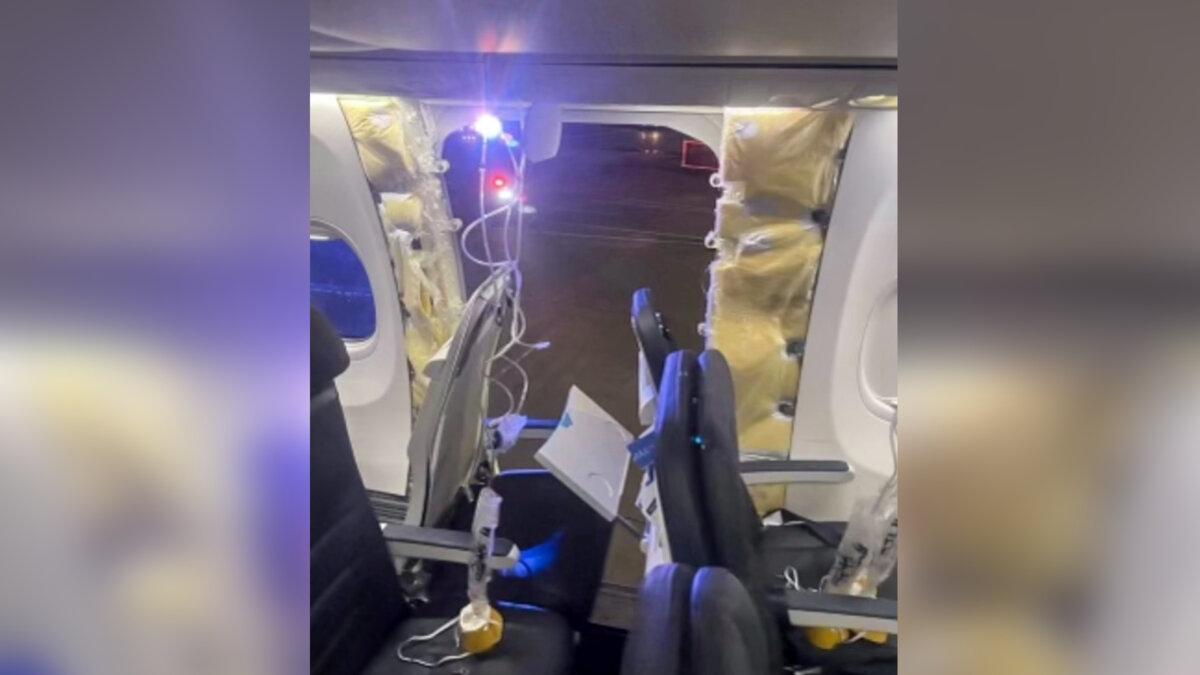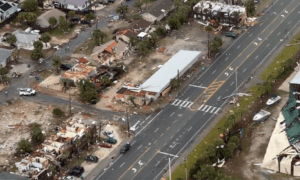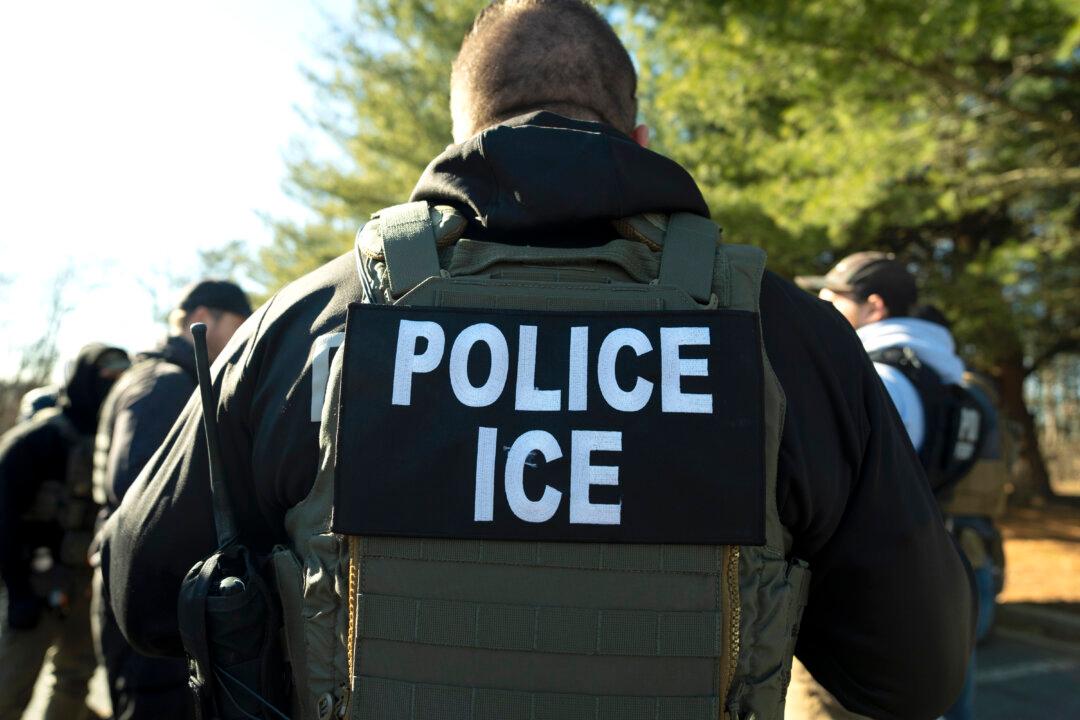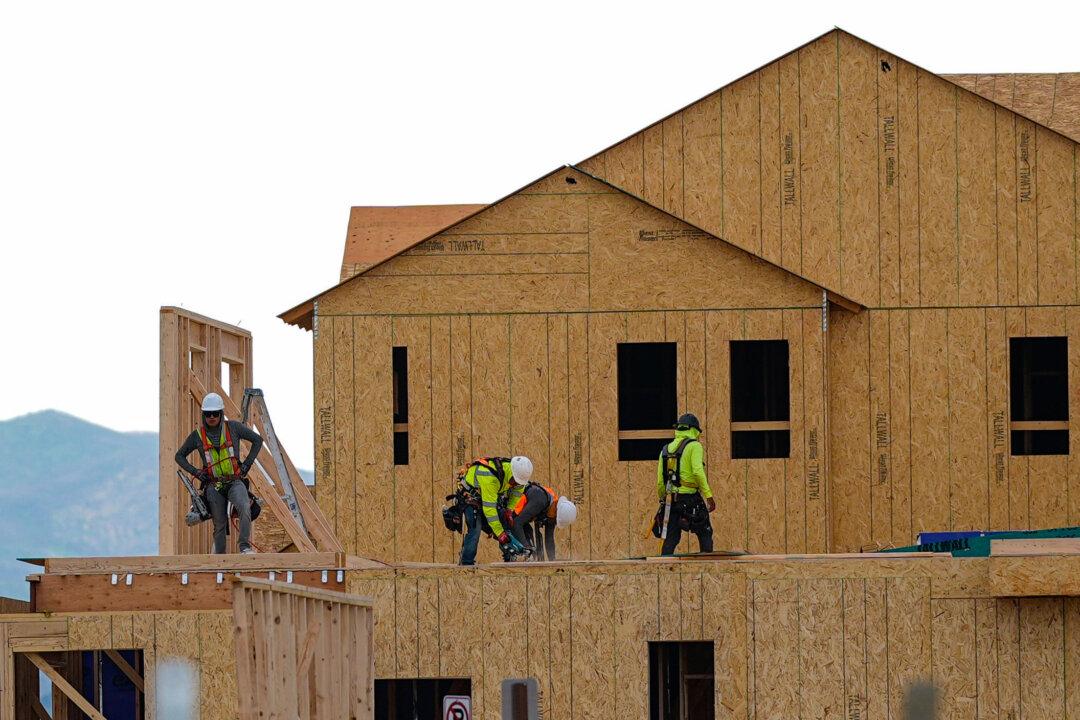Boeing acknowledged on Monday that its 737 production quality isn’t up to snuff and said it’s taking “immediate actions” to bolster its quality assurance and controls across its factories following the mid-air door plug blowout crisis on one of its planes.
A panel covering an unused emergency door blew out not long after takeoff on an Alaska Airlines-operated Boeing 737 Max 9 aircraft on Jan. 5, prompting a rapid decompression and forcing an emergency landing.
While no one was seriously injured, the incident led the Federal Aviation Administration (FAA) to ground all 737 Max 9s, order “enhanced inspections” on the planes, and launch an investigation into Boeing to see if the company failed to ensure proper production safety standards.
Boeing said last week it would cooperate “fully and transparently” with the FAA probe and on Monday, issued a statement acknowledging gaps in its quality assurance and control processes.
“We have taken important steps in recent years to strengthen our Quality Management System’s (QMS) foundation and its layers of protection,” Boeing commercial airplanes president and CEO Stan Deal said. “But, the AS1282 accident and recent customer findings make clear that we are not where we need to be. To that end, we are taking immediate actions to bolster quality assurance and controls across our factories.”
While carrying out the FAA-mandated inspections after the door plug blowout on Alaska Airlines flight 1282, some of Boeing’s customers have additional found issues, including loose door plug bolts.
Besides subjecting Boeing to an investigation in the wake of the incident, the FAA is also mulling stripping the company of its authority to self-inspect aircraft.

Immediate Actions By Boeing
Mr. Deal said in Monday’s message that Boeing would take a series of “immediate actions” to bolster quality assurance and controls amid continued FAA scrutiny.These include additional inspections throughout the build process at Boeing and Spirit AeroSystems, the supplier of the Max 9 fuselages, which includes the door section that came off the Alaska Airlines plane.
“These checks will provide one more layer of scrutiny on top of the thousands of inspections performed today across each 737 airplane, and build on the reviews we have implemented to catch potential non-conformances,” Mr. Deal said.
The executive also pledged a review of Spirit AeroSystems’ work, with Boeing staff now inspecting Spirit’s installation of the exit door plug and approving them before the fuselage section is even shipped to Boeing. The planemaker is also inspecting over 50 other aspects of Spirit’s build process and checking them against engineering specifications.
Boeing is also opening its factories to operators of the 737 model aircraft for additional oversight inspections of its production and quality procedures, Mr. Deal said.
An outside party will also be brought in to subject Boeing’s quality management system to a thorough review and suggest ways in which the planemaker can improve quality.
“These actions are separate from the FAA’s investigation and the agency’s plan to increase oversight of 737-9 production. We will cooperate fully and transparently with both as we work to restore trust with our regulator and our customers,” Mr. Deal said.
The Incident
Alaska Airlines Flight 1282 was en route to Ontario, California, from Portland, Oregon, when the exit door plug tore off, leading to a rapid decompression and forcing an emergency landing.The incident took place about six minutes into the flight when the aircraft reached an altitude of about 16,000 feet.
Luckily, no one was seriously injured, but experts say if the incident had taken place at a cruising altitude of, say, 40,000 feet, the incident could have been deadly.
The pilot declared an emergency, notifying air traffic control of a depressurization issue.
Social media footage showed a window and a portion of a side wall panel missing on the airplane and oxygen masks deployed.
The plane door was later reported found in the backyard of a Portland home.

The Fallout
The incident led the FAA to ground all Max 9 planes for special inspections.“It is time to reexamine the delegation of authority and assess any associated safety risks,” FAA Administrator Mike Whitaker said in a statement, adding that the agency is “exploring” the use of an independent third party to carry out oversight of Boeing’s inspections and its quality controls.
Boeing told The Epoch Times in a written statement that it welcomes the FAA’s announcement and “will cooperate fully and transparently.”
“We support all actions that strengthen quality and safety and we are taking actions across our production system,” Boeing added.
Boeing did not address the FAA’s threat to pull the planemaker’s so-called “organization designation authority”—the ability of Boeing’s own staff to certify aircraft safety.
The company’s authority to self-inspect came under earlier scrutiny when two Boeing 737 Max 8s crashed in 2018 and 2019.







